6 Exercises That Are Too Hard on Your Body After 50
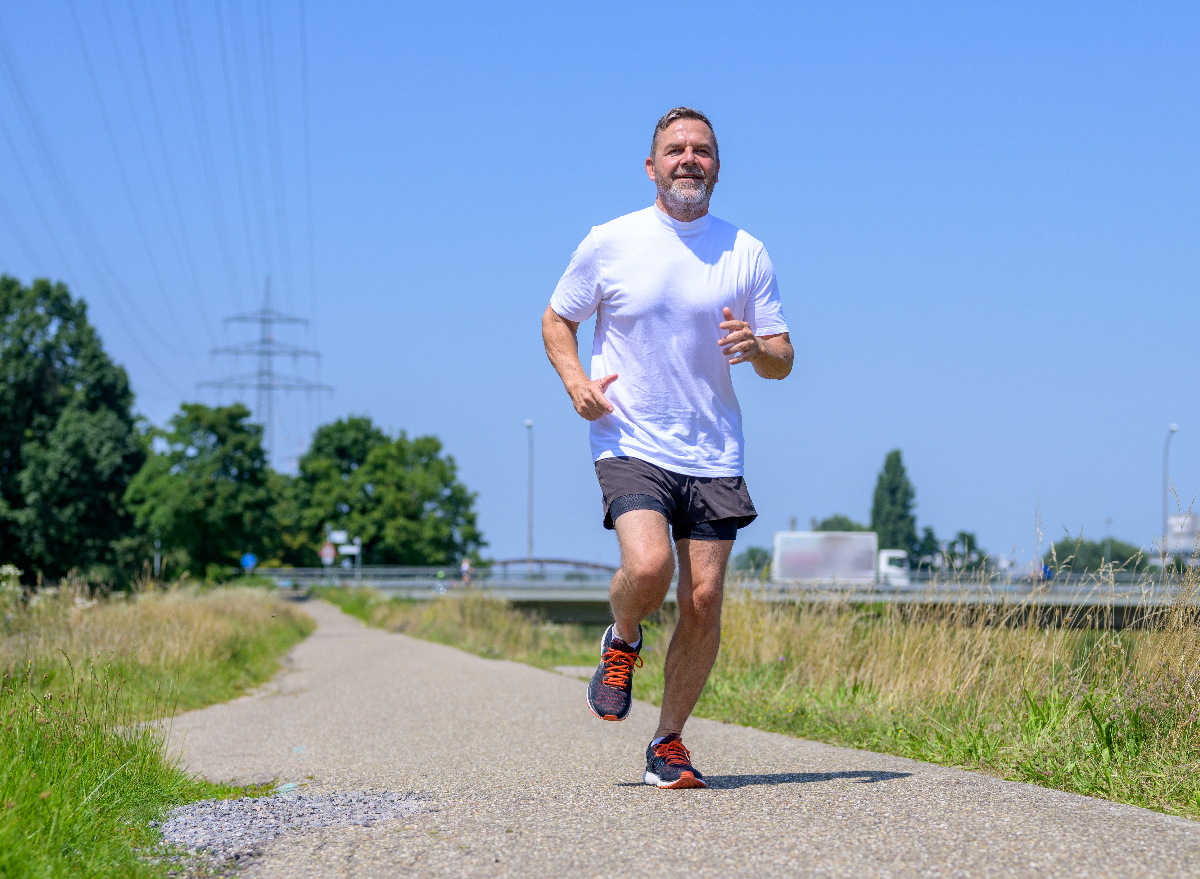
Once you reach 50, your body requires more TLC. This is especially true when it comes to exercise, as certain workouts can strain your body excessively as you age, increasing your injury risk and decreasing the likelihood that you’ll stay active. Unfortunately, only 30% of U.S. adults between 45 and 64 actually do regular physical activity, according to the National Institutes of Health. But don’t worry; plenty of alternative exercises can help you maintain your fitness while minimizing the risk of pain or injury. We’re here today to chat about some exercises to avoid after 50 because they’re just too hard on your body.
To provide expert insights and practical advice on modifying your exercise routine, we chatted with Lance Johnson, CPT, Life Time Personal Trainer and ARORA coach, who identifies seven exercises you should avoid after turning 50. Plus, we’ll share helpful tips on alternative exercises that are safer and more effective for this age group to equip you with the knowledge and tools you need to exercise safely and effectively at 50 and beyond.
By learning which exercises to avoid and how to modify your workout routine, you can continue to enjoy the benefits of exercise without straining your body. Read on to discover the seven exercises that are too hard on your body after 50 so you can stay healthy and active for years. And when you’re done, check out 5 Exercise Habits That Are Destroying Your Body After 50.
Barbell Deadlifts
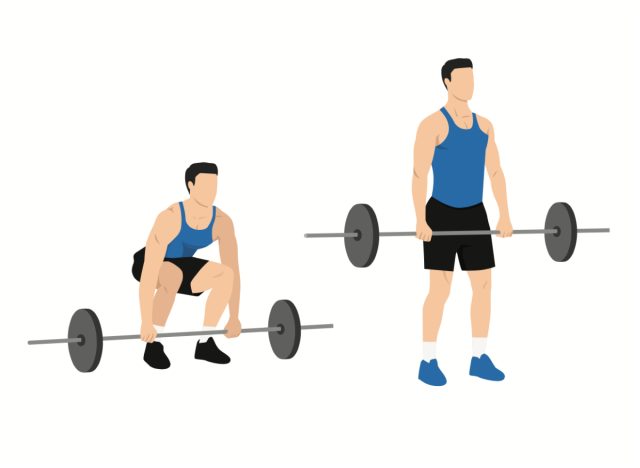
The barbell deadlift is a popular exercise that targets your lower back, glutes, quads, and hamstrings, according to MasterClass. However, as you age, your joints and bones become more fragile, and the barbell deadlift can put too much strain on your lower back. Instead, try incorporating exercises such as bodyweight squats, lunges, or resistance band exercises to target your lower body muscles without putting too much strain on your back.
“If you’re training for a powerlifting competition, the barbell deadlift is necessary, but the risk-to-reward ratio on a barbell deadlift for a beginner is very high,” states Johnson. “Fortunately, there are alternatives. For example, a hex bar or dumbbell deadlift can be a much safer option.”
Barbell Back Squats
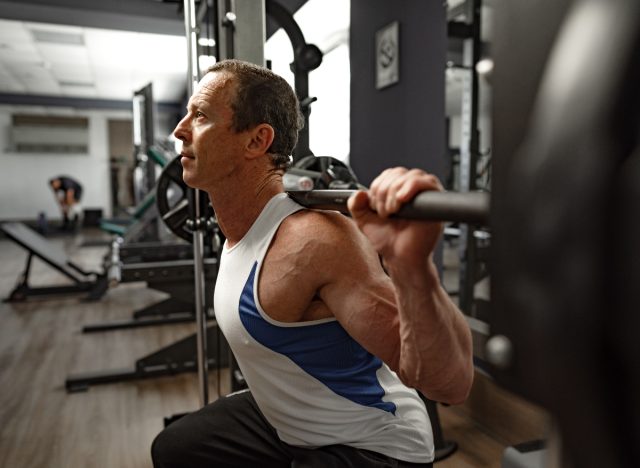
Like the barbell deadlift, the back squat can be too hard on your body after 50. The weight of the barbell can put too much pressure on your spine and joints. Consider substituting the barbell back squat with exercises such as goblet squats or bodyweight squats to target your leg muscles without causing lower back pain.
“A great alternative to the barbell back squat is a dumbbell goblet squat. And if you need more help to get started, add a box to sit on as you lower yourself,” says Johnson.
Barbell Bench Press
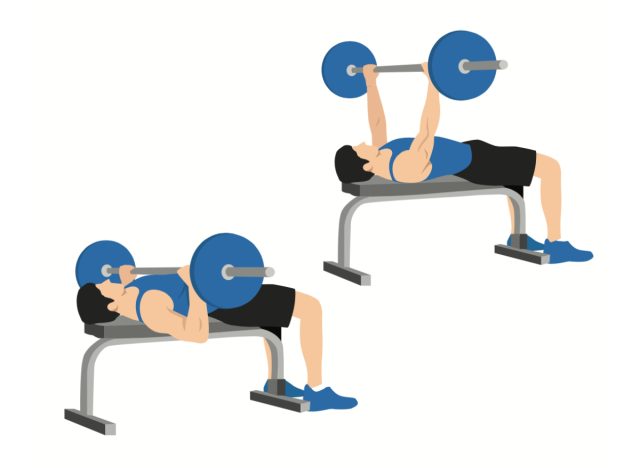
The barbell bench press is a staple exercise in many strength training programs since it targets your shoulders, chest, and triceps, Character Strength & Conditioning reports. However, the weight of the barbell can put excess pressure on your shoulders and joints, leading to injury. Instead, try substituting the barbell bench press with exercises such as dumbbell chest press, push-ups, or the cable chest fly.
“For beginners, this exercise can put unwanted pressure on the shoulder joint,” explains Johnson. “An easy fix is to use a pair of dumbbells, being sure to keep the upper arm around 45 degrees from the body as you lower the dumbbells.”
Dumbbell Arnold Press
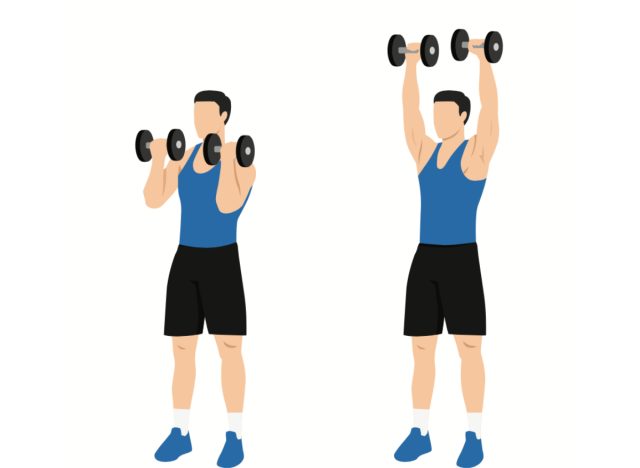
The dumbbell Arnold press is a classic exercise that targets your shoulders and upper back. But, unfortunately, the weight of the dumbbells can strain your shoulders and increase injury risk. Instead, try incorporating movements such as seated shoulder press or lateral raises to target your shoulder muscles without harming your joints.
“An alternative to the dumbbell Arnold press is to do either a normal shoulder press or a neutral grip shoulder press,” says Johnson.
Box Jumps
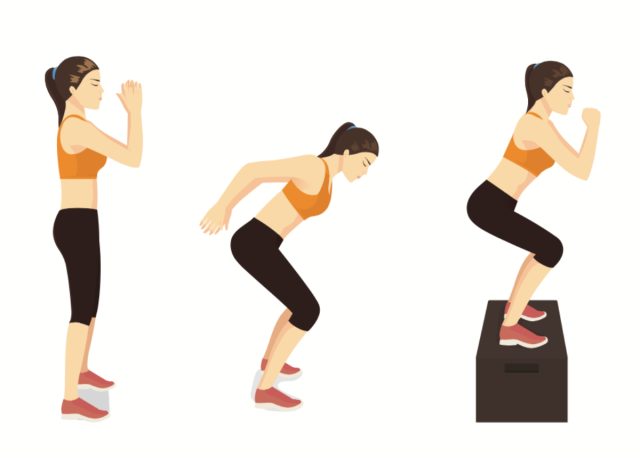
Box jumps are an excellent high-intensity exercise that involves jumping onto a box or platform. However, the impact of the landing may result in excess strain on your knee joints. Instead, consider substituting box jumps with exercises such as step-ups or lunges.
“Walking into the gym, you may see younger lifters jumping onto large boxes. This can be very tough and risky for someone just beginning,” explains Johnson. “A great start is to find a line and jump side to side over the line for a minute or use a jump rope.”
Sprints

Sprints are another high-intensity exercise that can place too much strain on your joints, mainly your knees and ankles. Instead, reduce your injury risk and boost your cardio by incorporating brisk walking or cycling to increase your heart rate.
“The beauty of sprint training is that you can do it on any piece of equipment,” says Johnson. “For beginners, I would suggest a bike or elliptical to help take off the impact of a track or treadmill. An easy format to follow is to push hard for 30 seconds and take two minutes rest, do eight sprints for a great conditioning or cardio workout.”
Overtraining
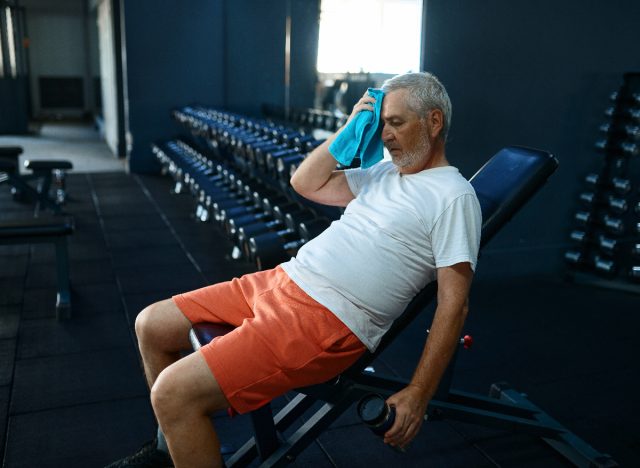
While this last point isn’t a particular exercise, it’s still necessary to touch upon. Physical activity is essential for staying healthy as you age, but overdoing it at the gym can harm your body, according to research. Training too hard too often can lead to injury, fatigue, and burnout. Instead, aim to incorporate various exercises into your routine and give your body enough time to rest and recover between workouts.
“A huge pitfall for people beginning a fitness journey can be doing too much too soon. A large part of getting the desired results is letting the body rest and recover. And as we get older, that process can take longer. So it’s okay to take a day off between exercise sessions to let the body catch up,” says Johnson.









